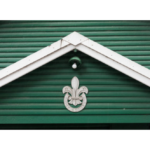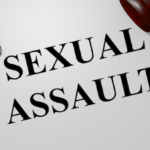British Man Pleads Guilty to Nearly 100 Child Sexual Offences

A British man has admitted to almost 100 sexual offences against children in Britain, Australia and the US.
In a UK court, 36 year old labourer David Wilson pleaded guilty to 96 sexual offences against 51 boys, some as young as four years old.
Police say there is evidence that more than 500 children had sent Mr Wilson sexual images over the internet. They suspect the defendant contacted around 5,000 from various countries across the globe.
Fake accounts, posing as a teenage girl
Mr Wilson posed as teenage girls on various Facebook accounts and other forms of social media.
He sent sexual images that he found online of young women the children he contacted, asking them to send him videos and images of themselves in return.
Once he had built their trust, Mr Wilson then blackmailed the children into sending him more explicit footage – in some cases of them sexually abusing friends or younger siblings.
Police commenced investigating the offending conduct in 2017, after Facebook identified 20 accounts of boys who had sent indecent images of themselves to an account which supposedly belonged to a 13 year old girl.
The investigation ultimately led to Mr Wilson’s arrest, and he is expected to be sentenced in early 2021.
Online sexual abuse
Images of child sex abuse are being shared at unprecedented rates over the internet, partly because tech companies and law enforcement agencies are struggling to keep pace with the problem.
During National Child Protection week in Australia in September research was released which suggested that Australia is the third largest consumer of live, online child sex abuse.
Over the financial year 2019-202, the AFP laid 1214 charges against 161 people, removing 67 Australian children from harm.
In the same period, the AFP-led Australian Centre to Counter Child Exploitation (ACCCE) received more than 21,000 reports of child sexual exploitation, a 50 per cent increase on the year before.
In April, May and June this year, reports to the ACCCE from the public relating to child exploitation material online increased 122 per cent compared with the corresponding period last year. It is clear Covid19 has lured more predators online.
Protecting children
The AFP’s message to parents is simple: talk to your children, understand the apps and games they are using, monitor activity and get to know who they’re interacting with online. While many schools nationally conduct cybersafety, the responsibility for children’s safety online starts in the home.
Commonwealth laws
Section 474.19 of the Criminal Code Act 1995 (Cth) makes it an offence across Australia to use a carriage service – such as a telephone or the internet – to access, transmit or make available child pornography material.
Child pornography includes any material that depicts or represents a minor, a person under the age of 18, who is:
- engaged in, or appears to be engaged in, a sexual pose or sexual activity (whether or not in the presence of other persons), or
- in the presence of a person who is engaged in, or appears to be engaged in, a sexual pose or sexual activity
The definition extends to material that describes or implies a minor engaged in any of these activities. It also includes any material that depicts the sexual organs.
New South Wales laws
Disseminating, possessing or producing child abuse material is an offence under section 91H of the Crimes Act 1900 (NSW) which carries a maximum penalty of 10 years in prison.
To establish the offence, the prosecution must prove beyond reasonable doubt that:
- You possessed, disseminated or produced material, and
- The material was child abuse material.
‘Possession’ includes physical custody or control of material or data
‘Dissemination’ includes:
- sending, supplying, exhibiting, transmitting or communicating to another
- making available for access by another, and
- entering an agreement or arrangement to do so
‘Production’ includes:
- filming, photographing, printing or otherwise making
- altering or manipulating, and
- entering an agreement or arrangement to do so
Child abuse material charges cover: Filming, photographing, printing or otherwise making child abuse material, or altering or manipulating any image for the purpose of making child abuse material, or initiating or entering into any agreement or arrangement to do so.
What is child abuse material?
Section 91FB of the Crimes Act 1900 (NSW) defines child abuse material as that which depicts or describes, in a way that reasonable person would regard as being, in all the circumstances, offensive, such as:
- A person who is, appears to be or is implied to be, a child as a victim of torture, cruelty or physical abuse
- A person who is, appears to be or is implied to be, a child engaged in or apparently engaged in a sexual pose or sexual activity (whether or not in the presence of other persons)
- A person who is, appears to be or is implied to be, a child in the presence of another person who is engaged or apparently engaged in a sexual pose or sexual activity, or
- The private parts of a person who is, appears to be or is implied to be, a child.
In determining whether reasonable persons would regard particular material as being, in all the circumstances, offensive, the following factors are taken into account:
- The standards of morality, decency and propriety generally accepted by reasonable adults
- The literary, artistic or educational merit (if any) of the material, and
- The journalistic merit (if any) of the material, being the merit of the material as a record or report of a matter of public interest
- The general character of the material (including whether it is of a medical, legal or scientific character)
Private parts are a person’s genital area or anal area, or the breasts of a female person.
Under the definition, a ‘child’ is a person under the age of 16 years.
Defences to child abuse material offences
Defences to the charge of disseminating, possessing or producing child abuse material include that:
- You did not know, and could not reasonable have known, that you possessed, disseminated or produced it,
- Your conduct benefited the public through law enforcement or administration, or the administration of justice, and did not extend beyond it,
- The material received a classification for publication,
- The use of the material was approved by the Attorney-General for research, or
- The material depicts you and would not be child abuse material in the absence of your image.
An additional defence is where you received the material unsolicited and took reasonable steps to get rid of it upon becoming aware of its nature.
Legal exception
A legal exception to child abuse material charges is that:
- The possession of the material occurred when you were under 18, and
- A reasonable person would consider the possession acceptable considering:
- The nature and content of the material,
- The circumstances whereby you came to possess it,
- The age, vulnerability and circumstances of the child depicted,
- Your age, vulnerability and circumstances, and
- The relationship between you and the child depicted.








